Unique plants of Vietnam
In Vietnam, there is a very unique tree. It has only one heart-shaped leaf. Therefore, this tree is called the one-leaf tree.
According to the Capital Security newspaper, the one-leaf plant has the scientific name Nervilia fordii (Hance) Schultze, belonging to the Orchidaceae (Orchid) family. It is also known as thanh thien quy, lan mot la, lan co, chau diep, slam jasmine, bua thooc (Tay), bau thooc...
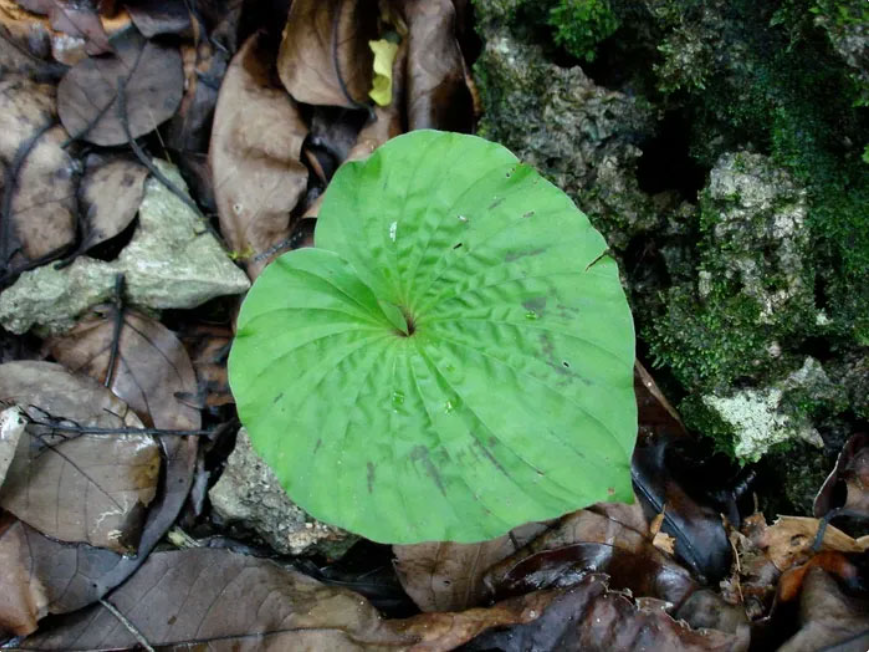
In Vietnam, there is a very unique tree called the one-leaf tree. (Photo: Internet)
According to the Dan Toc newspaper, the one-leaf plant is a terrestrial plant, a long-lived grass, 10-20cm tall. The stem is very short, the tuber is round and large, opaque white, lean, with many joints on the tuber that can weigh up to 1.5-20g. Straight from the tuber, only one single leaf grows after the flower fades.
This plant species likes shade, especially moisture, often grows in rock cavities, or on soil with a lot of humus under the canopy of moist evergreen forests or broadleaf trees. The tree's distribution altitude is from 600 - 1500m.
Round heart-shaped leaves, light green, arranged with palmate veins, 10 – 25cm in diameter, wavy edges. Veins radiate evenly from the petiole, petiole is 10 – 20cm long, purple-pink in color.
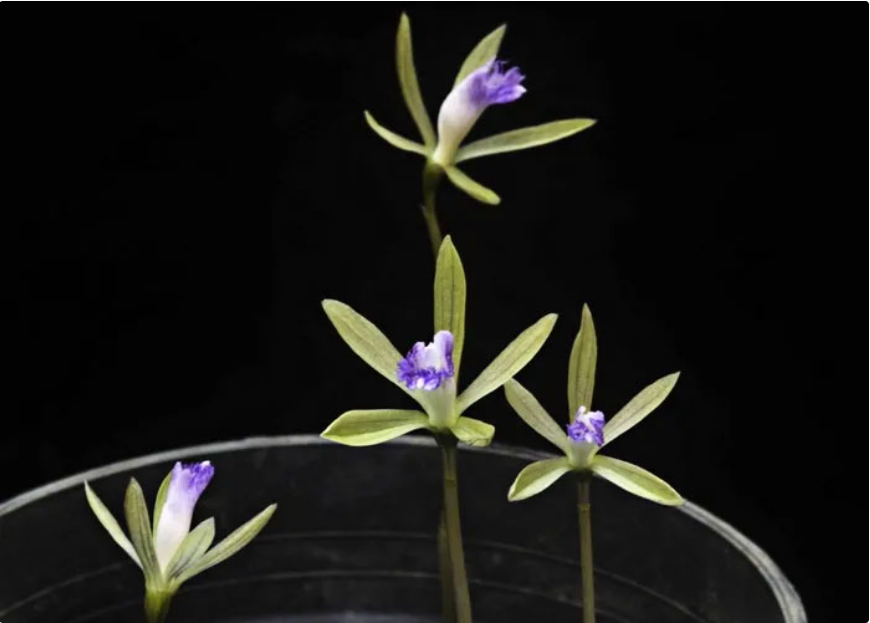
The flowers of this plant are very beautiful. (Photo: Internet)
The inflorescence has a 20-30cm long stem. The flowers are sparse, 15-20, growing in clusters or white flowers, with purple-pink or slightly greenish-yellow spots. The sepals and petals are similar. The lip is 3-lobed, has many veins, has hairs in the middle, the lateral and terminal lobes are triangular, the column is 6mm long, and is swollen at the top.
The tree flowers in March, April and May, and produces capsules in April, May and June. When the flowers bloom, the tips of the upper petals are clustered together, making the whole flower look like a lantern. The fruit is diamond-shaped, with segments on top that look like a small star fruit, 2-3cm long. The capsules contain many small seeds. The tubers form from May to November. The tubers of monocotyledonous plants go into a dormant state from November to March of the following year before becoming active again.
Usually after the flowers have faded, new leaves develop, so we either only see the tree with flowers or fruit, without leaves, or we only see the tree with leaves, usually one leaf.
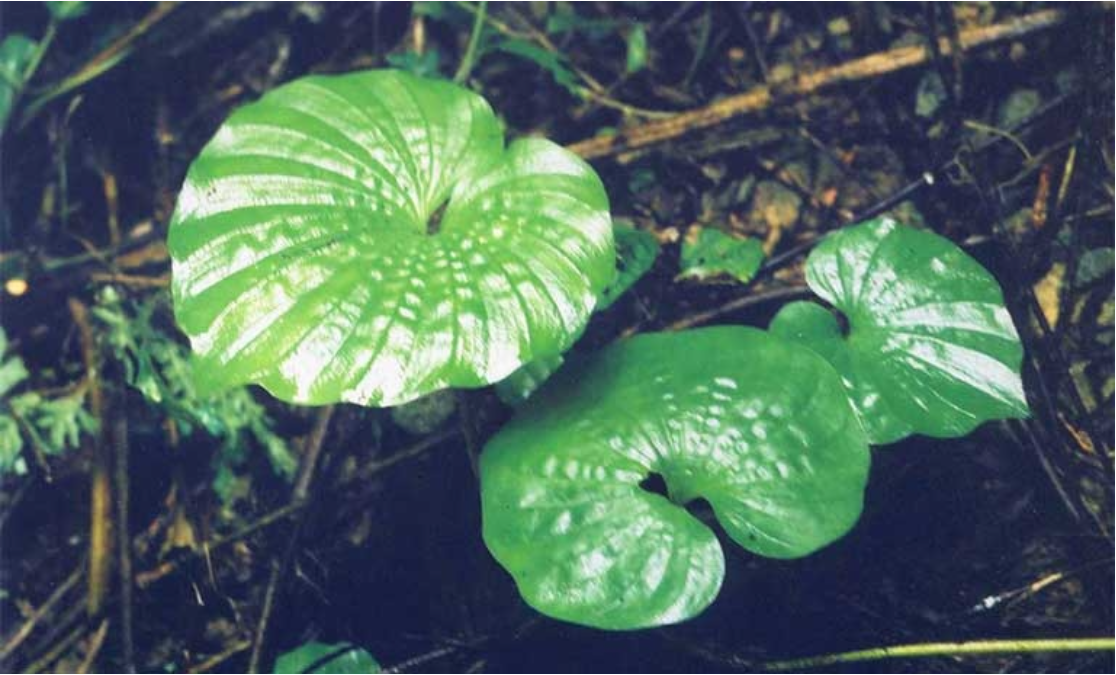
The monocot tree is a rare plant species often found in limestone mountains and humid places at the foot of mountains. (Photo: Internet)
Monopodial plants regenerate naturally by tuberous rays, so in a group of plants in nature there are often many plants of different ages.
In Vietnam, this plant is often found in limestone mountains and humid places at the foot of mountains. The plant often grows in Lao Cai, Hoa Binh, Ninh Binh, Lang Son, Cao Bang , Ha Giang, Tuyen Quang, Ha Tay, Son La, Lai Chau, ...
Medicinal value of the one-leaf plant
The one-leaf plant has been considered a precious medicinal plant, all parts of the plant can be used as medicine.
According to the book "Medicinal plants and medicinal animals in Vietnam, volume 1, Science and Technology Publishing House, Hanoi ", the leaves and roots of the plant have a sweet, slightly bitter taste, are neutral and cool, and have the effect of clearing heat, moistening the lungs, reducing coughs, dispersing blood stasis, detoxifying, and relieving pain. The leaves and plants are also used as antidotes, especially for mushroom poisoning, to cool the lungs, and to treat tuberculosis, chronic coughs, and bronchitis. Chewing fresh roots quenches thirst and nourishes the body.
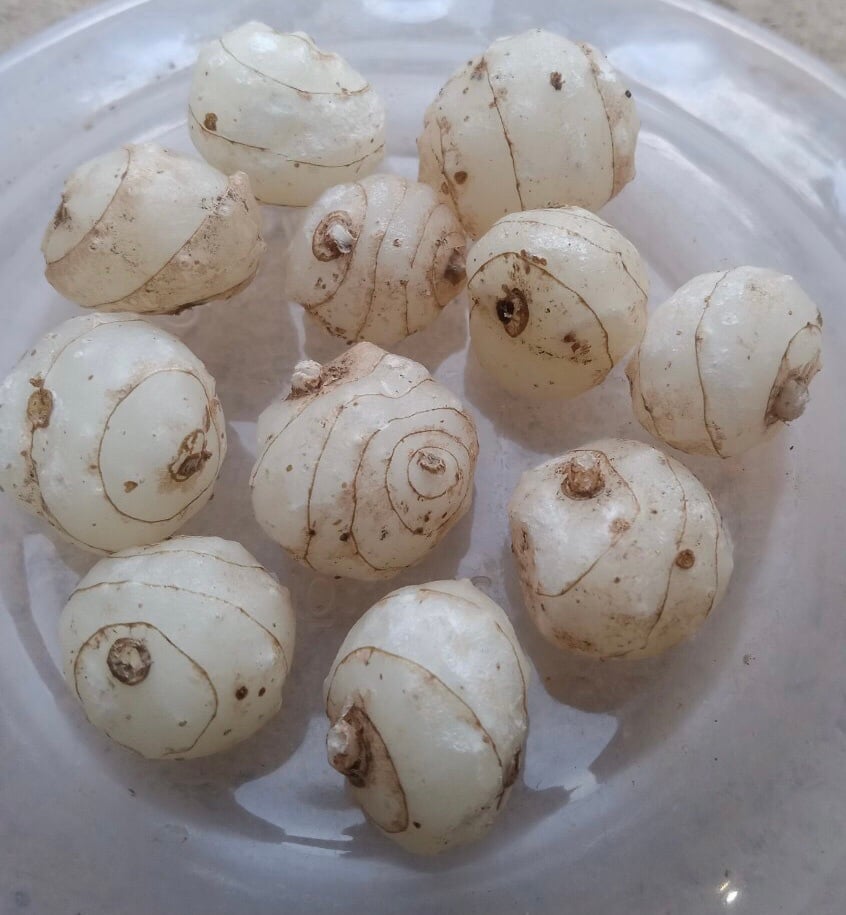
Close-up of the tuber of a monocotyledonous plant. (Photo: Internet)
There have been a number of studies worldwide on the chemical composition and biological activity of compounds extracted from the monocotyledonous plant. The results show that the monocotyledonous plant contains terpenoids, flavonoids, amino acids and some volatile oils. These compounds have pharmacological activities against inflammation, antiviral, analgesic, cough, asthma and chronic bronchitis, acute pneumonia, chronic obstructive pulmonary disease, etc. Currently, the monocotyledonous plant is being studied to treat lung cancer and nasopharyngeal cancer. With its high economic and pharmacological value, the monocotyledonous plant is considered one of the species that should be prioritized in the conservation of rare genetic resources.
According to experts' recommendations, when harvesting, to protect the plant, only the whole plant should be harvested, or just the leaves, leaving the roots for the plant to grow. Leaves can be harvested year-round, used fresh or dried. Harvest and separate large and small leaves, then process.
One-leaf tree - A "rare and hard to find" plant
According to the Capital Security newspaper, the one-leaf tree is a valuable medicinal plant, so it is mainly used for export and is rarely used domestically. For this reason, many people in the area where the one-leaf tree lives rarely have the opportunity to see it. Many people also say that finding a one-leaf tree is as difficult as finding a diêu bông leaf.
However, the monocot plant is often confused with the octagonous plant (Dysosma chengii) because it is also a tuberous plant and has one leaf. However, the leaves of the octagonous plant have six sides, while the monocot plant has a heart shape. Many people even confuse the monocot plant with the leaves of the plantain plant.
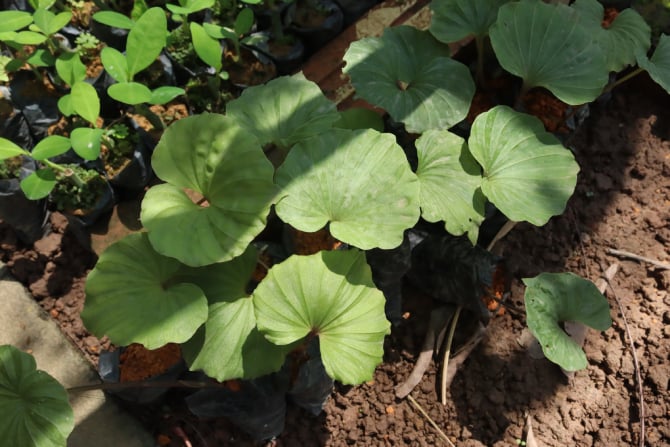
Because this plant has valuable medicinal value, it is mainly used for export, and very few locals have the opportunity to see it in the country. (Photo: Internet)
In addition to being used as a medicinal herb, the one-leaf plant is also loved and collected by bonsai enthusiasts around the world for its uniqueness and rarity.
According to the Vietnam Science and Technology Journal, the natural reserve of monocarpus in Vietnam is decreasing due to overexploitation. The amount of monocarpus in nature is not much (in Pu Mat National Park, it is 10 - 15 trees/100m2), making this species of tree rare and at risk of extinction. Monocarpus is listed as a species in need of protection in the "Vietnam Red Book".
Research and conservation of rare plant species
Also according to the Vietnam Science and Technology Journal, researchers are currently propagating this rare plant species in Lang Son. Lang Son is a province with favorable climate, soil and terrain conditions for the growth and development of many rare medicinal gene sources, including the monocarpic plant. The Institute for Regional Research and Development has carried out the task of "Research on conservation and development of monocarpic plant gene sources" in Lang Son province to collect and preserve monocarpic plant gene sources, develop methods for storing, preserving, restoring and propagating gene sources; build models for conservation, exploitation and development of this precious gene source to serve the socio-economic development of the locality.
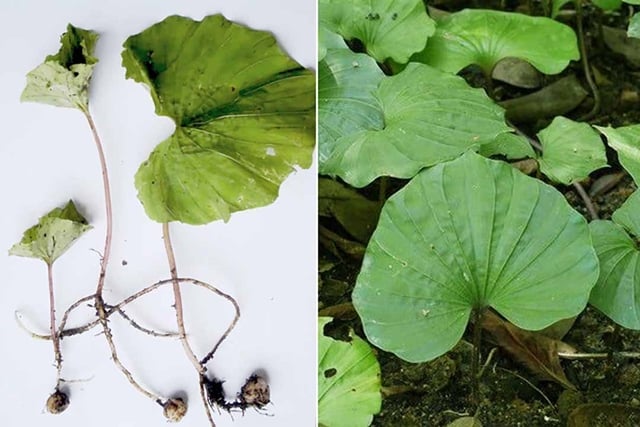
Researchers are currently conducting breeding to preserve this rare plant species. (Photo: Internet)
Studies on monocotyledon propagation techniques show that the best planting season is March-April every year (survival rate is 96.0-96.7%, germination rate is 87.33-95.3%). The size of the tuber has a great influence on the growth of monocotyledon. Tuber diameters from 1.0 to greater than 2.0 cm all have high germination rates (87.33-97.33%).
Source



![[Photo] The Government Standing Committee works with ministries and branches on the real estate market situation.](https://vphoto.vietnam.vn/thumb/1200x675/vietnam/resource/IMAGE/2025/5/24/e9b5bc2313d14c9499b8c9b83226adba)


![[Photo] Ho Chi Minh City holds funeral for former President Tran Duc Luong](https://vphoto.vietnam.vn/thumb/1200x675/vietnam/resource/IMAGE/2025/5/24/9c1858ebd3d04170b6cef2e6bcb2019e)























![[Photo] Party and State leaders visit former President Tran Duc Luong](https://vphoto.vietnam.vn/thumb/1200x675/vietnam/resource/IMAGE/2025/5/24/960db9b19102400e8df68d5a6caadcf6)

















































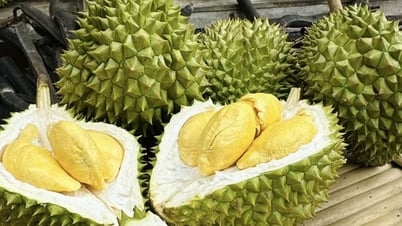














Comment (0)